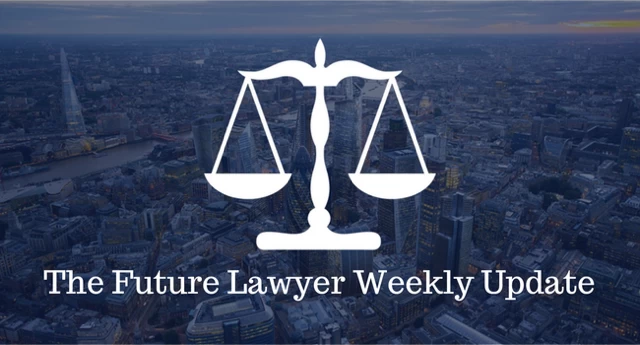
Marriage at the Expense of a Will: One Binding Agreement in Exchange for Another
June 8, 2025One of the biggest headaches for any aspiring solicitor during their application journey has got to be the Watson Glaser test.
With around 30,000 students applying every year, you’re up against some serious competition to score well on the test. Although some might try to avoid firms that use the Watson Glaser, in reality, preparing for it and doing well can open more doors in your application journey.
From understanding the test, its nuances, and application, there are many layers to unpack. This article covers it all, breaks it down, and helps you beat it.
Crack the Watson Glaser Test: Secure Your Training Contract
What Is the Watson Glaser Test?
Stop Guessing: How to Spot the Right Inference Every Time
Read Between the Lines: Nail the Hidden Assumptions Others Miss
Logic Made Simple: How to Get Deductions Right Without Overthinking
The Unseen Clues: How to Interpret Information Like a Pro
Are You Missing the Point? Master the Art of Evaluating Arguments
Prep Like a Pro, Don’t Just Wing It
Practice Questions: Time to Put It All Together
What Is the Watson Glaser Test?
It’s not just a logic puzzle, it’s a critical thinking test that law firms love to use.
The Watson Glaser test assesses how well you interpret information, identify assumptions, draw conclusions, and evaluate arguments. You’ll usually face 40 questions in 30 minutes, across five sections. Each one tests a different type of reasoning that your (hopefully future) legal career will require.
Here’s a quick overview of the sections:
| Section | What It Tests | Answer Types/Format |
| Inferences | Can you judge if a statement is likely? | True / Probably True / Insufficient Data / Probably False / False |
| Assumptions | Do you spot what’s taken for granted? | Assumption Made / Not Made |
| Deductions | Do conclusions follow logically? | Follows / Does Not Follow |
| Interpretations | Are the conclusions reasonable? | Follows / Does Not Follow |
| Evaluation of Arguments | Can you judge argument strength? | Strong / Weak Argument |
Stop Guessing: How to Spot the Right Inference Every Time
Inferences are where you play detective.
You’ll read a short passage and decide if a proposed inference is likely, unlikely, or just plain unsupported. The key? Ignore gut feelings, only focus on what’s written or what’s widely accepted knowledge.
Let’s break down what each option really means:
| Option | What It Means |
| True | 100% supported by the text in the passage, no doubt about it. |
| Probably True | Likely to be true, but not certain from the passage alone. |
| Insufficient Data | Not enough information, the passage doesn’t give you what you need. |
| Probably False | Likely false, but again, not totally clear-cut from the passage. |
| False | Definitely contradicted by the passage, no way it’s true. |
Read Between the Lines: Nail the Hidden Assumptions Others Miss
Assumptions are all about the hidden stuff.
You’ll get a short scenario and a follow-up statement. You need to decide whether that statement is based on an assumption that’s been made or not. It’s tricky because the assumptions aren’t stated outright, but they have to be there for the logic to hold.
In other words: what’s implied, not what’s said.
You’ll choose between:
- Prompts in the form of a premise and conclusion
- Answer options of Conclusion Follows or Conclusion Does Not Follow
If this sounds confusing, but don’t worry, there is a massively helpful quick trick you can use when tackling assumptions.
Before you answer, say out loud or in your head: “So you’re assuming that…”, followed by the proposed statement. Now take a look back at the scenario, and if your sentence makes sense based on the information in the scenario, an assumption has been made.
Using this trick will hopefully help you get through the section that most claim is the most difficult section of the Watson Glaser.
Here’s some example questions to get you thinking.
Scenario: A family flies instead of driving because they need to arrive quickly.
Statement: Travelling by plane is more expensive than by car.
Answer: Assumption Not Made.
The scenario only talks about speed and we can’t assume anything about the price, unless it’s mentioned directly and follows from the scenario.
Now look at this:
Statement: Travelling by plane is faster.
Answer: Assumption Made. That’s the reason they chose to fly!
Here, the scenario supports the statement directly, no guessing required.
Logic Made Simple: How to Get Deductions Right Without Overthinking
Deductions feel like solving a logic puzzle.
You’ll get a few statements (called premises), followed by a conclusion. Your task is to decide if that conclusion logically follows based purely on what’s written, nothing else.
Forget what you know in real life, just work with what’s in front of you.
You’ll choose between:
- Prompts in the form of a premise and conclusion
- Answer options of Conclusion Follows or Conclusion Does Not Follow
Try deducing these for a start.
Premise: Some citizens pay taxes. Many citizens receive income support.
Conclusion: More citizens receive income support than pay taxes.
Answer: Does Not Follow.
You can’t assume one group is bigger depending on “some” and “many”.
Strategy Tips:
- Treat all premises as 100% true, no matter what.
- Ignore your own knowledge, even if the conclusion feels right or wrong.
- If the conclusion adds new info or stretches the premise even a little, it does not follow.
This section rewards careful readers, so take your time and stay strict with the logic.
The Unseen Clues: How to interpret information like a pro
Now we’re moving into slightly fuzzier territory.
Interpretation questions ask whether a conclusion reasonably follows from the facts. Not absolutely, but beyond a reasonable doubt. So, it’s not strict logic like deductions, but still demands clear, evidence-based thinking.
You’re looking for conclusions that make solid sense based on the info you’re given.
You’ll choose between:
- Prompts in the form of a short scenario and conclusion
- Answer options of Conclusion Follows or Conclusion Does Not Follow
With interpretations, there’s a nifty way to determine whether something aligns.
Read the statement and ask yourself: “If I wrote this passage, would I expect someone to reach this conclusion?” If the answer is yes, it probably follows.
Now you know the key difference between deductions and interpretations.
But prepping for the test is only half the journey, connecting with firms is the other.
Are You Missing the Point? Master the Art of Evaluating Arguments
Now it’s time to judge.
In this section, you’ll get a short question and an argument in response. Your job is to decide whether that argument is strong or weak. But here’s the twist: short doesn’t mean bad, and long doesn’t mean good.
In the test you’ll once again be faced with two pieces of information.
One question and an argument. Your task is to decide if the argument is Strong or Weak. You must not let your personal opinions influence your choice.
So, what makes an argument strong?
- It’s clearly relevant to the question.
- It shows a cause-and-effect link.
- It’s specific and focused.
And what makes one weak?
- It’s vague or off-topic.
- It doesn’t truly support or challenge the issue.
- It relies on emotion or sweeping generalisations.
Let’s try an example:
Question: Should companies give employees free time to spend however they want?
Argument: No, they’ll probably just use it for chores or socialising, which doesn’t benefit the company.
Answer: Strong, because it directly addresses the question, is relevant, and explains a consequence (no company benefit).
Don’t focus on whether you agree, focus on whether the argument logically supports the point.
You’ve finished all five sections, nicely done! But, the Watson Glaser isn’t the only test law firms use. Learn about the situational judgment test.
Stay Ahead: How Neurodivergent Test-Takers Can Level the Playing Field
The standard test format doesn’t work for everyone.
If you’re neurodivergent, say, dyslexic, autistic, or have ADHD, the Watson Glaser might feel especially rigid. That’s not on you. It just wasn’t built with everyone’s brain in mind.
The good news?
Law firms are finally catching up. Most law firms now offer reasonable adjustments. These could include extra time, screen readers, or alternate formats that work better for you.
But you won’t get these unless you ask for them.
- Email the firm’s grad recruitment team early, as soon as you are aware that you will be taking the test.
- Be clear about what you need. Is it extra time? A larger screen? Braille adjustments for visual impairments? The firm will likely support you.
- Remember: adjustments aren’t a stigma, they’re a balancing exercise.
Who said critical thinking tests were just for neurotypicals?
Prep Like a Pro, Don’t Just Wing It
The Watson Glaser isn’t about memorising facts.
It’s about staying sharp under pressure, and making airtight decisions using key psychometric rules fast. Naturally, this means your best prep weapon is practice.
Practice using verified resources that reflect the strict thinking that the test requires.
To ease you into preparation, here are some warrior tips.
- Take timed practice tests, simulate the real thing.
- Use your results to spot weak areas, don’t just redo your strong points.
- Stick to the info given, real-world knowledge will often mislead you.
Ready to practice properly? Try sample questions and test your skills right now on AllAboutLaw.
And if you want more than just a few questions…Level up with full eLearning modules. Get access to Watson Glaser prep designed by legal professionals.
You don’t need to be a genius to do well, just someone who’s prepared smartly, and you’ve got the tools to do exactly that.
Practice Questions: Time to Put It All Together
You’ve learned the structure, strategies, and sneaky pitfalls.
Now it’s time to try it out for yourself with real-style Watson Glaser examples. These questions are pulled directly from the kinds of scenarios law firms actually use. Practice using our prep tips to make the most of these questions.
Let’s see how ready you are.
Inferences
Scenario: A psychologist was approached by an alarmed mother who complained that her daughter had been bullied when a child threw a fist-full of leaves in her face. Asked if her daughter was upset, the mother answered: “No, she just brushed the leaves off and told me they were having fun.” The psychologist emphasised the need to draw a distinction between behaviour that is harmless, behaviour that is rude, and behaviour that is characteristic of bullying, and concluded this was not a case of bullying.
Proposed Inference: The mother and the daughter interpreted the same incident in different ways.
- True?
- Probably True?
- Insufficient Data?
- Probably False?
- False?
Solution: Probably True
(At first glance, it seems the mother saw the incident as bullying, while the daughter described it as playing. However, the daughter might have said this out of shame, fear, or to avoid worrying her mother. Therefore, the answer is “Probably True.)
Assumptions
Scenario: In the event of a warmer planet due to global warming, we will need to develop a drought-resistant species of grass.
Proposed Assumption: People will continue to grow grass in future globally-warmed areas.
- Assumption Made?
- Assumption Not Made?
Solution: Assumption Made (If grass is not predicted to be found in the future, then evidently there is no need for developing a drought-resistant species.)
Deductions
Premise: Some citizens pay taxes. Many citizens receive income support.
Proposed Conclusion: More citizens receive income support than those who pay taxes.
- Conclusion Follows?
- Conclusion Does Not Follow?
Solution: Conclusion Does Not Follow (Proportions are not mentioned in the statement, and we have to rely solely on the information in the statement.)
Interpretations
Premise: Everyone who has been diagnosed with sleep apnea has fought a personal battle owing to the disease. For example, Vicki suffered from depression and lost her job, while Bill felt a strain on his marriage.
Proposed Interpretation: Vicki lost her job because of her illness.
- Conclusion Follows?
- Conclusion Does Not Follow?
Solution: Conclusion Follows (The passage says people with sleep apnea struggle personally. Vicki, who has sleep apnea, lost her job because of it. Since you must decide if this conclusion reasonably follows from the passage, assuming everything is true, you can conclude it does.)
Evaluation of Arguments
Question: Should a company grant employees free time to spend in any manner they choose?
Proposed Argument: No, employees are likely to use their free time to clean their homes, run errands, and meet with friends, and thus bring no benefit to the company whatsoever.
- Strong Argument?
- Weak Argument?
Solution: Strong Argument (The argument is both relevant to the topic and important.)
Conclusion
The Watson Glaser test can seem intimidating, but like any skill, critical thinking gets easier with the right tools and practice. By understanding the structure, applying smart strategies, and focusing on what the test is actually asking, you’re already on track. Take your prep seriously, and trust that your ability to think clearly and logically will take you the rest of the way.
-
By Sammar Masood



